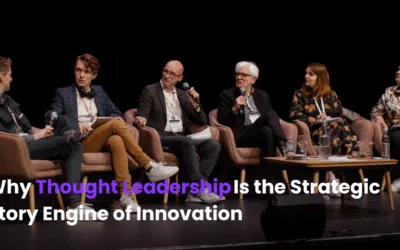Why do innovation efforts fail? Most organisations aren’t suffering from a lack of ideas — they’re struggling to do something meaningful with them. Innovation isn’t failing because of imagination; it’s failing because of execution. That’s why we see internal innovation labs not as a luxury — but an essential capability.
A well-structured internal innovation lab solves a very real problem: the inability to turn strategic intent into scalable outcomes.
The Innovation Execution Gap
Innovation efforts frequently stall after the brainstorming stage. Despite executive buy-in and resourced strategies, promising initiatives often falter due to slow decision cycles, lack of ownership, and organisational resistance to risk. Teams are left with whiteboards full of ideas and no clear path to test, validate, or implement them.
The result is familiar:
- Initiatives die in committee.
- MVPs never reach real customers.
- Innovation is relegated to workshops, not workflows.
This isn’t just inefficient — it’s demoralising. And over time, it erodes both innovation culture and confidence.
What Internal Innovation Labs Actually Solve
Innovation labs provide a structured, protected space where ideas can be rapidly explored, tested, and validated — without getting bogged down in day-to-day operations.
Done well, innovation labs:
- Create clear pathways from idea to prototype to pilot.
- Provide cross-functional collaboration beyond org chart silos.
- Allow for low-risk experimentation with real-time feedback.
- Generate internal champions and a shared language for change.
In short, labs replace hope with process, and intent with impact.

Innovation Labs in Action: Catalyst Lab, NSW Department of Education
When the NSW Department of Education partnered with Disruptors Co to launch the Catalyst Lab Innovation Project, the goal was simple: enable teachers to design solutions for teachers. Over six months, 100+ ideas were distilled into prototypes, refined in design sprints, and tested with real users (yes, students and teachers).
The lab didn’t just create new tools — it created new ways of working.
Creating a Space for Purposeful Innovation: Unboxd
The New Horizons’ Unboxd Accelerator is another example of how embedding a dedicated innovation lab drives deeper outcomes. Co-designed by Disruptors Co, the lab supported startups in the disability and wellbeing space, bringing together clients, executives, and founders in a shared space to ideate, prototype, and pilot new services.
By pairing internal staff with external innovators, Unboxd didn’t just validate new products — it built innovation capability across the organisation and introduced new metrics and rhythms for continuous development.
Importantly, we worked with the New Horizons board to ensure they had visibility and governance across the program from the very beginning. The goal was not only to build internal innovation skills across the organisation – we needed to ensure that there was a common language, understanding and systematic process that the Board and the executive could unlock.
From Program to Platform: City of Sydney’s Innovation Model
Even outside traditional corporate labs, a lab-like structure can enable massive innovation at scale. The City of Sydney Business Innovation Program empowered 20 small businesses through a structured 12-week curriculum that combined coaching, workshops, and digital upskilling.
The result? 84 innovations implemented, stronger business models, and lasting networks formed. The program continued the following year, growing in depth and reach — proof that when the right structure is in place, innovation becomes self-sustaining.
Innovation Labs Are Not About the Space — They’re About the System
It’s easy to mistake an innovation lab for a room with post-its, design sprints, and smart furniture. But what matters most is the operating model. The design of how ideas move from insight to experiment to outcome.
Labs work because they:
- Set boundaries for exploration.
- Provide clear governance and sponsorship.
- Build internal capability.
- Align with strategic goals.
Without these elements, labs become innovation theatre. With them, they become innovation engines.
Building Labs That Do the Work
If your organisation is stuck in the “innovation trap” — lots of talk, little traction — then ask yourself: Do we have the systems in place to move from idea to action?
An internal innovation lab is one of the most powerful tools to bridge that gap. It’s where risk becomes manageable, learning becomes rapid, and transformation becomes tangible.
Because in today’s complex environment, innovation doesn’t need to be louder. It needs to be deliberate.



